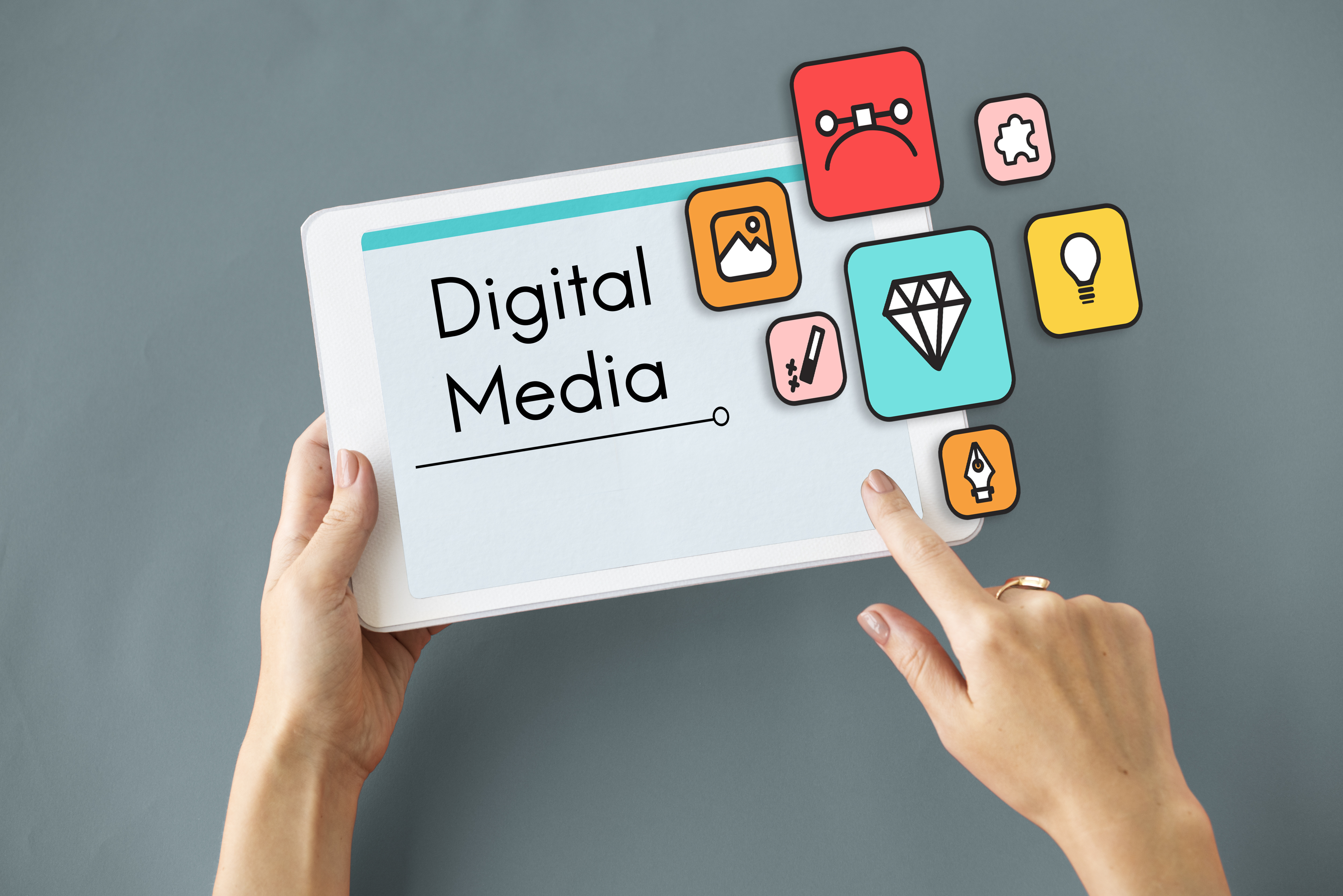Digital media has become an integral part of technological advancement. Different types of digital media have unique characteristics. Here’s an in-depth look at them.
What is Digital Media?
Digital media refers to communication tools that utilize digital technology to deliver information or content to an audience. This technology encompasses computers, the internet, software, and various digital devices, allowing data to be processed, stored, and distributed in digital formats. Digital media includes text, images, audio, video, and animations, all of which can be accessed electronically.
With the rapid advancement of technology, digital media has become embedded in everyday life, shaping the way people learn, communicate, and conduct business. What are the common examples of digital media? What are their purposes and unique characteristics? Let’s explore further.
8 Examples of Digital Media in Everyday Life
1. Websites
Websites are among the most common forms of digital media. They serve various purposes, including business information, personal blogs, and educational platforms. Websites can be static, providing fixed information, or dynamic, enabling user interaction such as comments, form submissions, and e-commerce transactions.
2. Social Media
Platforms like Facebook, Instagram, Twitter, and LinkedIn are widely used forms of digital media. Social media enables users to interact, share information, images, videos, and news in real-time. Businesses also leverage social media for marketing, customer engagement, and brand promotion.
3. Mobile Applications
Mobile applications are software programs designed for smartphones and tablets. They cover a wide range of functions, including banking apps, social media platforms, gaming apps, educational tools, and utility applications. Mobile apps enhance convenience, allowing users to perform daily tasks efficiently.
4. Streaming Platforms
Streaming platforms provide on-demand video and audio content. Users can watch movies, listen to music, or stream videos anytime and anywhere with an internet connection. This has transformed how people consume entertainment and educational content.
5. E-Books and Digital Publications
E-books and digital publications allow users to access books, magazines, and other reading materials electronically. These can be read on e-readers, tablets, or smartphones, making distribution faster and more widespread compared to traditional print media.
6. E-Learning Platforms
E-learning platforms provide online education, training courses, and instructional materials. This includes video tutorials, interactive modules, and digital assessments that enable learners to access educational content conveniently.
7. E-Commerce
E-commerce platforms facilitate online shopping and transactions, serving as digital storefronts where buyers and sellers connect. These platforms streamline communication, showcase products, and provide seamless payment systems.
8. Podcasts and Digital Radio
Podcasts are audio-based digital media that cover various topics, from horror stories and inspirational talks to film reviews and comedy. They can be streamed or downloaded, allowing users to listen at their convenience.
Characteristics of Digital Media
Digital media has distinct characteristics that set it apart from traditional media. Traditional media is mostly one-directional, while digital media enables two-way interaction and engagement.
1. Interactivity
One of the main characteristics of digital media is interactivity. Users can engage with content, provide feedback, and participate in discussions. For example, in social media, users can comment, share, and react to posts, while on websites, they can leave reviews or download resources.
2. Accessibility
Digital media can be accessed anytime and anywhere as long as users have an internet-connected device. Unlike traditional media, such as newspapers and television, digital media is not restricted by time or location.
3. Multimedia Integration
Digital media often combines multiple content formats, such as text, images, audio, video, and animations, making the information more engaging and interactive.
4. Fast Distribution
Unlike print media, which requires physical printing and distribution, digital media allows content to be shared instantly on a global scale. A news article published online can be read worldwide within seconds.
5. Personalized Content
Digital media enables content customization based on user preferences. Algorithms track user behavior to suggest relevant content. For example, platforms like Netflix recommend movies based on viewing history, and digital ads target users based on their search history and interests.
The Importance of Identity Verification in Digital Media
Identity verification in digital media is crucial not only to authenticate users but also to protect against cyber threats such as fraud, identity theft, and misinformation.
With proper identity verification, digital media platforms can:
- Prevent fake accounts on social media that spread misinformation.
- Ensure secure transactions in online banking and e-commerce.
- Safeguard access to sensitive data in online education and government services.
Unfortunately, digital identity verification is also at risk of cybercrimes. Fraud cases, identity theft, data breaches, and unauthorized transactions frequently occur due to weak security measures.
How VIDA Ensures Secure Digital Identity Verification
To address these security challenges, VIDA offers end-to-end digital identity solutions, including:
- Identity Proofing – Validates user identity during registration.
- User Authentication – Prevents unauthorized access with biometric authentication.
- Fraud Detection – Identifies and blocks suspicious activities.
- Face Liveness and Document Liveness – Ensures the authenticity of users during identity verification.
- Digital Signatures – Provides legally recognized authentication for digital transactions.
By integrating these security layers, VIDA strengthens digital media platforms against fraud, ensuring safe and seamless user interactions.

.png)


